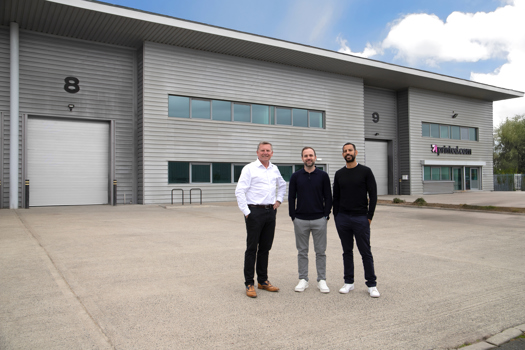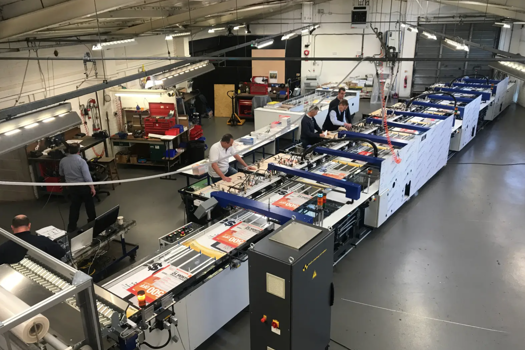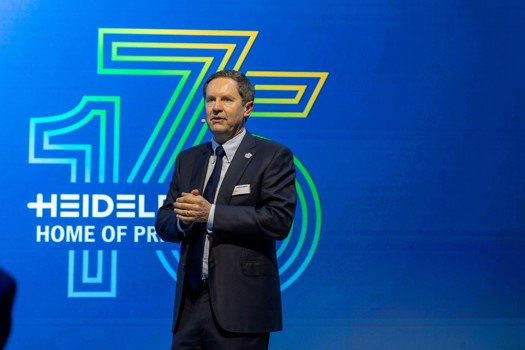Every industry has an important part to play in tackling this growing issue, and the good news is doing so needn’t be simply for the love of planet Earth – ‘going green’ has a significant and tangible impact on the bottom line. Using less energy more efficiently means lower utility costs. Reducing waste production means lower disposal charges. Keeping on top of maintenance and auditing means avoiding unnecessary expenditures down the line.
And the benefits go beyond the balance sheet. Customers and suppliers are increasingly looking to align themselves with green-thinking companies – as climate concerns dominate the headlines, environmental credentials are taking on a significant new importance so reducing your environmental impact puts you in an advantageous market position. These 10 measures – while not always obvious – will help to cut costs while calming the climate.
1 Solar
Despite the UK’s reputation for grey, gloomy weather, companies around the country are making good use of solar power, and printers are no exception. Watermill Press spent £100,000 on a solar array and thanks to the government’s feed-in tariff scheme, stands to earn around £400,000 after it’s recovered the initial outlay. Government legislation means that new solar customers won’t be eligible for feed-in tariff payments from this year, but the tech pays for itself. Watermill Press now saves £30,000 a year on bills since it’s producing its own energy, giving the solar panels a payback period of just over three years.
2 Electric vehicles
Print and post specialist CFH Docmail was one of the first companies to embrace green vehicle technology, welcoming a Toyota Prius into its company fleet back in 2005. Now, the company relies entirely on hybrid or electric vehicles, with two Nissan Leafs and a Nissan ENV van for postal collection and delivery, and three electric-only models, two plug-in hybrids and five electric-with-petrol-backup models on its company fleet. This technology means CFH saves 4,500 gallons (17,000 litres) of petrol and 40 tonnes of CO2 per year. For an average monthly cost of £250-£300 hire per vehicle, the company is realising savings around £21,000 per year in fuel costs and £2,250 in tax charges.
3 Biomass
The benefits of solar and wind power are well-documented, but manufacturers are increasingly looking at biomass to fulfil their heating needs. Previously, Saxon Packaging heated its factory with red diesel oil fed into industrial blowers, but this resulted in uneven heat distribution, high insurance risks and increasing costs in the face of rising oil prices. After considering replacing its system with gas, Saxon opted for biomass for both its environmental credentials and the attractive government Renewable Heat Incentive (RHI) that comes with it. The system cost a total £113,360, and while cost savings differ according to the temperature (for example, the colder it is, the more biomass pellets are used, but the company receives a larger RHI payment), Saxon saves an average £24,000 per year compared to its previous outlay, meaning the project will have paid for itself in around five years.
4 Energy-efficient lighting
Lighting remains some of the lowest-hanging fruit when it comes to reducing energy consumption. Back in 2010 Stephens & George unified the lighting standards across its three factories, replacing all indoor lighting with the energy efficient T5 system and its 500W exterior halogen lights with 5W LEDs. The total cost of replacing the indoor lighting was sizeable and came to around £48,000, but the company will save around £20,000 a year in electricity in the long run and reduce its lighting energy consumption by a staggering 65%.
5 Eco-cooling
Overheating is a common challenge for printing businesses, with low-humidity causing problems for paper integrity and high temperatures proving uncomfortable for operatives. Southport’s Print Direct tackled these issues with a cooling system where ambient air is evaporatively cooled as it passes over a wet filter. As an added bonus the air is humidified, which helps the printing process and paper storage on hot days. According to ecocooling.org, a typical modular system covering an area of 250m2 would cost £10,000 and incur just 10% of the running cost of a conventional air conditioning system, yielding a saving of around £2,000 per year.
6 Voltage optimisation
Employee engagement programmes – where staff are encouraged to turn lights and equipment off when not in use – are common in workplaces around the country, but there are more tangible ways to reduce your energy consumption, in some cases with little or no effort at all. Lots of equipment is designed to be run at 210V, and so powering it with 240V – as is the standard in the UK – results in waste energy that generates unnecessary heat and puts extra stress on parts and motors. Voltage optimisation systems (also available for three-phase) help to balance this out as well as eliminating transient spikes in supply from the National Grid. Wide-format trade specialist CMYKHub (formerly RCS) has installed such a system, resulting in 12% reduction in power consumption, with the kit paying for itself in around eight months.
7 Watch waste
Materials wastage is an inevitable part of the print process, but with landfill tax consistently on the rise (it’s up to £84.40 per tonne from April 2016) recycling should be a top priority for print companies. Stephens & George spent time looking at its waste budget back in 2005 and was horrified to find it was spending some £60,000 per year. A simple system of colour-coded bins (red for waste paper, green for other recyclables) and a partnership with waste collection company Biffa means Stephens & George has reduced its waste to landfill from a significant 1,500 tonnes to just five. Landfill costs have been massively reduced, the company makes a modest amount from its recyclables and, crucially, a ‘green mentality’ runs throughout the workforce, which is helping the company reduce costs, and its environmental impact in other areas too.
8 Processless plates
Printers go through their fair share of water and chemicals, which is why kit manufacturers are increasingly focusing innovation efforts on waterless printing and chemical-free plating processes. All of the three major plate manufacturers have their own variants on processless, or process-free printing plate technology: Agfa with its Azura range, Fujifilm with Brillia, and Kodak with Sonora. And no-process plates have come on in leaps and bounds over recent years making it suitable for mainstream print applications. The latest generation products are worth investigating. Stephens & George invested in this technology at the start of 2014 and have since reduced water consumption during processing by a staggering 95% and are enjoying plate chemistry savings in the region of 87%. The company is also saving significant man-hours which would otherwise be spent cleaning processor units.
9 Monitor and audit
It’s not enough to simply install new technologies and hope for the best. To keep on top of your environmental footprint (and its associated costs) you need to monitor it over time – after all, you can’t reduce something you can’t quantify. Ensuring equipment is maintained properly and works well can have a significant impact on efficiency. Saxon Packaging, for example, found that the emitters and nozzles in its biomass system weren’t up to scratch, resulting in uneven heat distribution. Thanks to a regular programme of checks and inspections, the issue was caught and rectified earlier rather than later. Similarly, careful auditing by PrintWeek Environmental Company of the Year, DST, has saved around £1,000 in lighting at its Bristol base and almost £56,000 in reduced over-production in Nottingham.
10 Don’t forget the office
Given the nature of the printing business it’s no surprise environmental concerns are largely given over to the kit, but significant savings can be made in administrative areas, too. Using energy efficient equipment can make a huge dent in energy costs; computers brandishing the Energy Star logo, for example, use 70% less electricity than models without power management. Ensuring kitchen appliances such as kettles and fridges are operating as efficiently as possible will reduce electricity bills, and making sure your office space is well-insulated will also pay off. According to The Carbon Trust, a building with 200m2 of cavity walls would cost around £900 to insulate. Assuming a fuel price of 4p/kWh, this could yield savings of around £150 and payback of costs within six years. Similarly, taking steps to draught-proof an office gives big results for little effort; heating systems don’t have to work so hard, employees are more comfortable and the outlay is likely to be less than £100.









